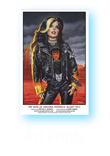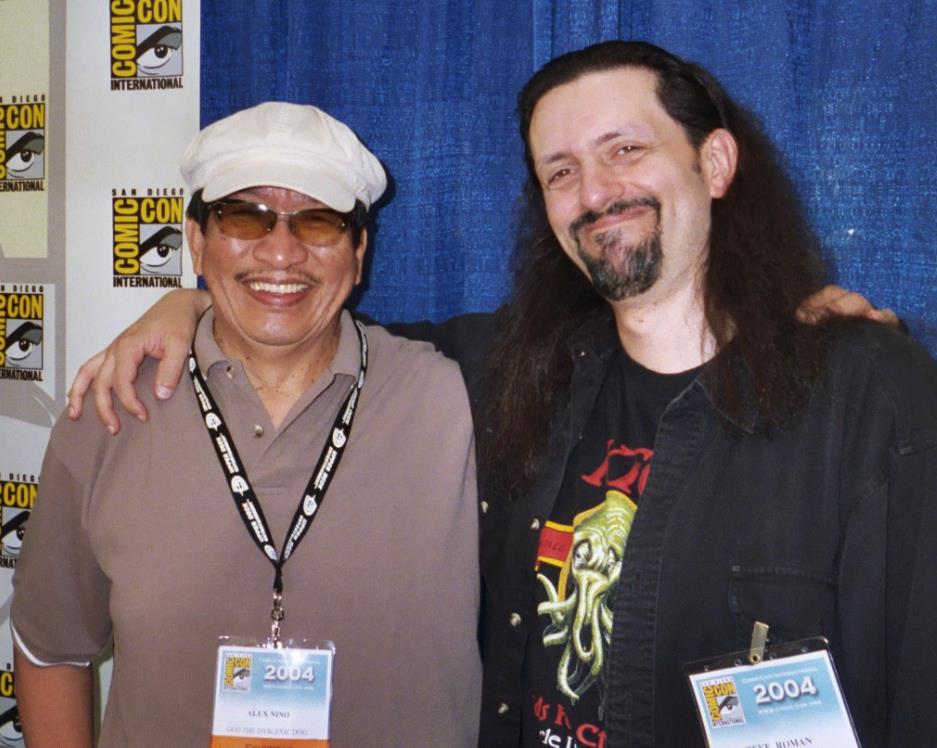
Alex Nino, one of the great Filipino comic book artists and an all-around great guy, turns 75 tomorrow, and as you can tell from the photo above (taken at the 2004 San Diego Con) I once got to meet him. But it’s more than that—I actually got to work with him on a couple of graphic novel projects! Here’s the story of our first collaboration…
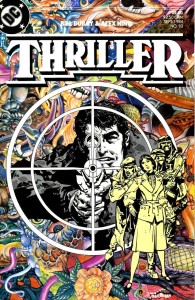 When I was a young comic fan, I was familiar with Alex’s weird, hyperkinetic artwork that played with just about every convention of comic art—I just didn’t care for it (stupid, I know). My tastes back then leaned toward more traditional artists: John Romita Sr., Gil Kane, Neal Adams, Tom Sutton, Mike Ploog (okay, Sutton and Ploog weren’t exactly “traditional”). Over time, though, I came to appreciate the craziness and energy of Nino’s fever-dream layouts, his figures practically bursting from the page. It was as far from mainstream art as one could get, but it was also so unique that with just one glance you knew you were looking at a Nino piece. For Marvel Comics, he drew the Marvel Classics The Time Machine and Moby-Dick, and issues of Savage Sword of Conan the Barbarian, Power Man, and Unknown Worlds of Science Fiction. For DC Comics, it was Thriller, the pirate serial “Captain” Fear in Adventure Comics, the graphic novel Space Clusters, and a truckload of stories for the horror anthologies House of Mystery, House of Secrets, Weird War Tales, and others. For Warren Publishing, it was stories for Creepy, Eerie, 1984/1994, and Vampirella. And when he left comics for a number of years, he worked as a designer for Walt Disney Pictures, contributing to Mulan, Treasure Planet, The Emperor’s New Groove, and Atlantis: The Lost Empire.
When I was a young comic fan, I was familiar with Alex’s weird, hyperkinetic artwork that played with just about every convention of comic art—I just didn’t care for it (stupid, I know). My tastes back then leaned toward more traditional artists: John Romita Sr., Gil Kane, Neal Adams, Tom Sutton, Mike Ploog (okay, Sutton and Ploog weren’t exactly “traditional”). Over time, though, I came to appreciate the craziness and energy of Nino’s fever-dream layouts, his figures practically bursting from the page. It was as far from mainstream art as one could get, but it was also so unique that with just one glance you knew you were looking at a Nino piece. For Marvel Comics, he drew the Marvel Classics The Time Machine and Moby-Dick, and issues of Savage Sword of Conan the Barbarian, Power Man, and Unknown Worlds of Science Fiction. For DC Comics, it was Thriller, the pirate serial “Captain” Fear in Adventure Comics, the graphic novel Space Clusters, and a truckload of stories for the horror anthologies House of Mystery, House of Secrets, Weird War Tales, and others. For Warren Publishing, it was stories for Creepy, Eerie, 1984/1994, and Vampirella. And when he left comics for a number of years, he worked as a designer for Walt Disney Pictures, contributing to Mulan, Treasure Planet, The Emperor’s New Groove, and Atlantis: The Lost Empire.
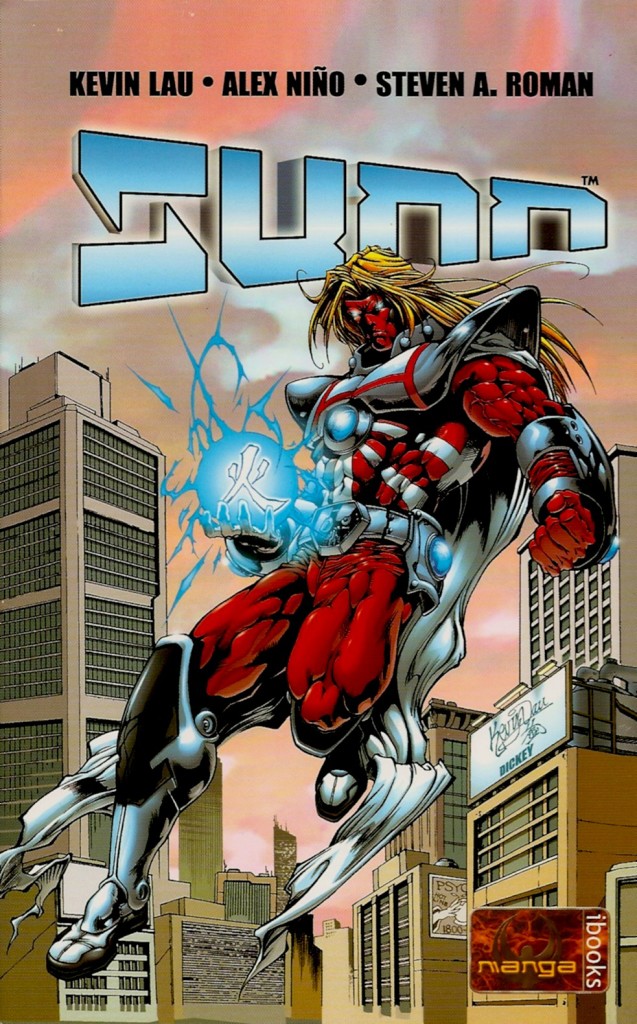 Skip ahead to late 2002. I’m now editor-in-chief of ibooks, inc., the book-publishing arm of a company called Byron Preiss Visual Publications. Byron wants to expand our title categories into genre graphic novels, and he’s got one in mind: Sunn, the story of teenager Carson Walker—the son of Titan, a Superman surrogate—and how he becomes a superhero. Originally scheduled to be a comic for Virtual Comics—the now-defunct Byron Preiss Multimedia (yeah, Byron had a thing for naming companies after himself; there was also the short-lived BP Books division that published my X-Men: The Chaos Engine Trilogy novels)—Sunn was part of an intellectual properties (IP) deal that transferred all rights from BPM to ibooks so Byron could own and develop them; the other IP was Stan Lee’s Alexa, a comic I eventually scripted in 2004. Anyway, Byron had Sunn and he wanted to publish it as a graphic novel, Some problems, though: Sunn had been meant to be a three-issue miniseries, and only one issue (24 pages) had been drawn; the artist, Kevin Lau, had moved on to higher paying jobs (Harris Comics’ Vampi, for one), and wasn’t interested in returning to the project; neither was the writer (whose name escapes me). Oh, and nobody had a copy of the guy’s script for that one completed issue. So: only 24 pages of art, no first-issue script, no artist, and no idea how the story was supposed to end. How the hell was this gonna become a book of no less than 128 pages?
Skip ahead to late 2002. I’m now editor-in-chief of ibooks, inc., the book-publishing arm of a company called Byron Preiss Visual Publications. Byron wants to expand our title categories into genre graphic novels, and he’s got one in mind: Sunn, the story of teenager Carson Walker—the son of Titan, a Superman surrogate—and how he becomes a superhero. Originally scheduled to be a comic for Virtual Comics—the now-defunct Byron Preiss Multimedia (yeah, Byron had a thing for naming companies after himself; there was also the short-lived BP Books division that published my X-Men: The Chaos Engine Trilogy novels)—Sunn was part of an intellectual properties (IP) deal that transferred all rights from BPM to ibooks so Byron could own and develop them; the other IP was Stan Lee’s Alexa, a comic I eventually scripted in 2004. Anyway, Byron had Sunn and he wanted to publish it as a graphic novel, Some problems, though: Sunn had been meant to be a three-issue miniseries, and only one issue (24 pages) had been drawn; the artist, Kevin Lau, had moved on to higher paying jobs (Harris Comics’ Vampi, for one), and wasn’t interested in returning to the project; neither was the writer (whose name escapes me). Oh, and nobody had a copy of the guy’s script for that one completed issue. So: only 24 pages of art, no first-issue script, no artist, and no idea how the story was supposed to end. How the hell was this gonna become a book of no less than 128 pages?
First off, by using every available piece of art (including character designs by Humberto Ramos—yes, the same guy who now draws Marvel’s Amazing Spider-Man) to help pad out the page count, then by taking the 24 pages and breaking their panels into individual pages. Insane, right? It helped that the book’s size was 5” x 8”; the smaller size meant in-house designer Jay Vita and I could get really creative in how we turned wide panels into two-page spreads and single panels into splash pages. By the time we were done, a 24-page comic had been turned into 132 pages of a graphic novel. The story, however, was incomplete—remember, Lau’s art only covered the first issue of the miniseries. And it still didn’t have a script for the pages that existed. How was this gonna get resolved?
Well, if you took a gander at that Sunn cover above, you can figure out how it got resolved: Byron called in the experts. 😀
I got the scripting job this way:
Byron: So…you want to write it?
Me: …Sure.
Byron: Okay.
(This was the exact same conversation we had for when it came time to find someone to write X-Men: The Chaos Engine Trilogy and Stan Lee’s Alexa. Forget the old axiom “It’s not what you know, it’s who you know,” I just happened to be sitting in front of Byron and he wasn’t interested in wasting time looking for a writer. It worked out for us both—made his life easier, and got me some writing credentials.)
As for Alex… Byron had been one of Alex’s sponsors back in the seventies who helped Alex move to the States from the Philippines so he could get comic work—a gesture that Nino still appreciated. So Byron called Alex and asked if he’d be interested in helping out. Of course Alex said yes, and he and I began talking about what needed to be done.
Then came the complications.
Byron wanted to jump on the manga craze, and he decided that Sunn would be ibooks, inc.’s entry into the genre. Problem was, manga’s exclusively a Japanese thing and Sunn’s creative team consisted of a white dude, a Chinese-American artist, and a Filipino art legend. At best, it might lean toward the “manhwa” category—a term generally used to describe Korean manga-esque projects—or an “American manga” label. Still, that didn’t stop Byron from slapping “ibooks manga” on the cover. Whatever.
The bigger issue: Byron insisted that Alex had to draw in the style of Kevin Lau.
That was just nuts. Kevin was a talented artist, but his manga-influenced superhero art was very straightforward and traditional (see the cover for an example), and Alex’s was… Remember what I said about fever-dream layouts? Their styles were the oil and water of comic art: they just didn’t mix. For another, Alex had never been a superhero artist, so already he was being placed outside his comfort zone. And then to demand that an artist with such a long history of amazing work should try and ape the style of someone many years his junior… Well, I was insulted on Alex’s behalf.
But Alex, being a total pro and a total nice guy and probably still feeling grateful to Byron for that long-ago sponsorship, simply laughed when I told him this and said okay, he’d do his best.
I still felt it was a bad decision, but if Alex was fine with it… Okay.
And with that we were off to the races…
To be continued!
While you’re waiting for tomorrow’s post, do yourself a favor and visit the Alex Nino Facebook page to see what he’s been up to these days, then head over to his website to check out some of his work.
Happy birthday, Alex!

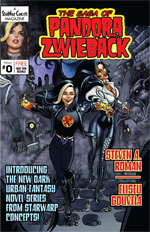 The Saga of Pandora Zwieback #0: A full-color introduction to Goth adventuress Pandora Zwieback, star of my young adult novel series, The Saga of Pandora Zwieback (of which books 1 and 2, Blood Feud and Blood Reign, are currently on sale). Pan has the ability to see the monsters that regular humans can’t, and with the help of a 400-year-old monster hunter named Sebastienne “Annie” Mazarin, she’s going to protect the world from danger—and maybe even have some fun while doing it. This sixteen-page comic is hosted by Pan herself, written by me (author of X-Men: The Chaos Engine Trilogy and Final Destination: Dead Man’s Hand), illustrated by Eliseu Gouveia (Infiniteens, The Phantom, Vengeance of the Mummy), and includes two sample chapters from Blood Feud.
The Saga of Pandora Zwieback #0: A full-color introduction to Goth adventuress Pandora Zwieback, star of my young adult novel series, The Saga of Pandora Zwieback (of which books 1 and 2, Blood Feud and Blood Reign, are currently on sale). Pan has the ability to see the monsters that regular humans can’t, and with the help of a 400-year-old monster hunter named Sebastienne “Annie” Mazarin, she’s going to protect the world from danger—and maybe even have some fun while doing it. This sixteen-page comic is hosted by Pan herself, written by me (author of X-Men: The Chaos Engine Trilogy and Final Destination: Dead Man’s Hand), illustrated by Eliseu Gouveia (Infiniteens, The Phantom, Vengeance of the Mummy), and includes two sample chapters from Blood Feud.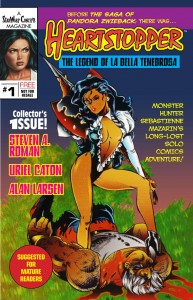 Hearstopper: The Legend of La Bella Tenebrosa #1–3: Before she became Pan’s monster-hunting mentor, Sebastienne Mazarin made her debut in this short-lived, 1990s Mature Readers series from Millennium Publications. A nefarious heavy metal band has arrived in New York City, and its lead singer is more than just a sex magnet for his female fans—he’s an incubus! Will Annie put an end to his plans for worldwide chaos, or fall prey to his supernatural charms? Written by me (of course), issue 1 was drawn by Pan and Annie co-creator Uriel Caton (JSA Annual, Lorelei Presents: House Macabre) and inker Alan Larsen (Femforce); issue 2 was penciled by Uriel, Holly Golightly (School Bites), and David C. Matthews (Satin Steele) and inked by Larsen; and issue 3 was penciled by Holly, with four pages of inks by “Chainsaw” Chuck Majewski (Lorelei Presents: House Macabre, Harvey Kurtzman’s New Two-Fisted Tales).
Hearstopper: The Legend of La Bella Tenebrosa #1–3: Before she became Pan’s monster-hunting mentor, Sebastienne Mazarin made her debut in this short-lived, 1990s Mature Readers series from Millennium Publications. A nefarious heavy metal band has arrived in New York City, and its lead singer is more than just a sex magnet for his female fans—he’s an incubus! Will Annie put an end to his plans for worldwide chaos, or fall prey to his supernatural charms? Written by me (of course), issue 1 was drawn by Pan and Annie co-creator Uriel Caton (JSA Annual, Lorelei Presents: House Macabre) and inker Alan Larsen (Femforce); issue 2 was penciled by Uriel, Holly Golightly (School Bites), and David C. Matthews (Satin Steele) and inked by Larsen; and issue 3 was penciled by Holly, with four pages of inks by “Chainsaw” Chuck Majewski (Lorelei Presents: House Macabre, Harvey Kurtzman’s New Two-Fisted Tales).
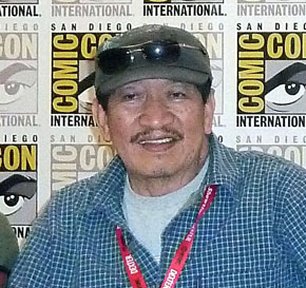 Today, comic-art legend Alex Nino (DC’s Black Orchid, Tarzan, and Thriller; Marvel’s Savage Sword of Conan the Barbarian; contributing designer on Mulan, Treasure Planet, and The Real Ghostbusters) turns 75!
Today, comic-art legend Alex Nino (DC’s Black Orchid, Tarzan, and Thriller; Marvel’s Savage Sword of Conan the Barbarian; contributing designer on Mulan, Treasure Planet, and The Real Ghostbusters) turns 75!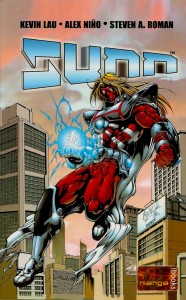 With no script for the majority of the graphic novel—no one could find a copy of the original writer’s work—and no conclusion plotted, I took the simple approach: stare at the existing artwork, starting at page 1, and wait for the words to come; then begin writing as the ideas came flowing in. That also meant coming up with character names and researching the manga genre on the fly (I’m not a fan). I had to figure out everything fast, though: after all, Alex was sitting around his West Coast studio, waiting on the script for his portion of the book.
With no script for the majority of the graphic novel—no one could find a copy of the original writer’s work—and no conclusion plotted, I took the simple approach: stare at the existing artwork, starting at page 1, and wait for the words to come; then begin writing as the ideas came flowing in. That also meant coming up with character names and researching the manga genre on the fly (I’m not a fan). I had to figure out everything fast, though: after all, Alex was sitting around his West Coast studio, waiting on the script for his portion of the book.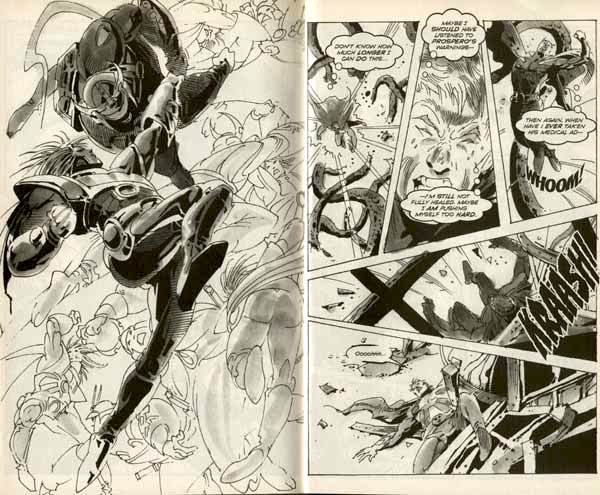
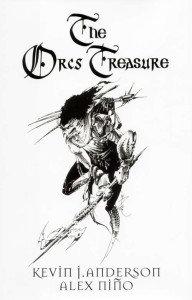 Still, working with Alex on Sunn was a joy for me. I just wish it could have been on a better project that would have allowed him to draw like Alex Nino. 😀 Actually, we did work on a better project that allowed him to draw like Alex Nino. A couple years after Sunn crashed and burned, I was the editor on a Kevin J. Anderson–scripted fantasy graphic novel, The Orc’s Treasure—a project where Alex really got to shine. And I couldn’t have been happier about how that turned out.
Still, working with Alex on Sunn was a joy for me. I just wish it could have been on a better project that would have allowed him to draw like Alex Nino. 😀 Actually, we did work on a better project that allowed him to draw like Alex Nino. A couple years after Sunn crashed and burned, I was the editor on a Kevin J. Anderson–scripted fantasy graphic novel, The Orc’s Treasure—a project where Alex really got to shine. And I couldn’t have been happier about how that turned out.
 When I was a young comic fan, I was familiar with Alex’s weird, hyperkinetic artwork that played with just about every convention of comic art—I just didn’t care for it (stupid, I know). My tastes back then leaned toward more traditional artists: John Romita Sr., Gil Kane, Neal Adams, Tom Sutton, Mike Ploog (okay, Sutton and Ploog weren’t exactly “traditional”). Over time, though, I came to appreciate the craziness and energy of Nino’s fever-dream layouts, his figures practically bursting from the page. It was as far from mainstream art as one could get, but it was also so unique that with just one glance you knew you were looking at a Nino piece. For Marvel Comics, he drew the Marvel Classics The Time Machine and Moby-Dick, and issues of Savage Sword of Conan the Barbarian, Power Man, and Unknown Worlds of Science Fiction. For DC Comics, it was Thriller, the pirate serial “Captain” Fear in Adventure Comics, the graphic novel Space Clusters, and a truckload of stories for the horror anthologies House of Mystery, House of Secrets, Weird War Tales, and others. For Warren Publishing, it was stories for Creepy, Eerie, 1984/1994, and Vampirella. And when he left comics for a number of years, he worked as a designer for Walt Disney Pictures, contributing to Mulan, Treasure Planet, The Emperor’s New Groove, and Atlantis: The Lost Empire.
When I was a young comic fan, I was familiar with Alex’s weird, hyperkinetic artwork that played with just about every convention of comic art—I just didn’t care for it (stupid, I know). My tastes back then leaned toward more traditional artists: John Romita Sr., Gil Kane, Neal Adams, Tom Sutton, Mike Ploog (okay, Sutton and Ploog weren’t exactly “traditional”). Over time, though, I came to appreciate the craziness and energy of Nino’s fever-dream layouts, his figures practically bursting from the page. It was as far from mainstream art as one could get, but it was also so unique that with just one glance you knew you were looking at a Nino piece. For Marvel Comics, he drew the Marvel Classics The Time Machine and Moby-Dick, and issues of Savage Sword of Conan the Barbarian, Power Man, and Unknown Worlds of Science Fiction. For DC Comics, it was Thriller, the pirate serial “Captain” Fear in Adventure Comics, the graphic novel Space Clusters, and a truckload of stories for the horror anthologies House of Mystery, House of Secrets, Weird War Tales, and others. For Warren Publishing, it was stories for Creepy, Eerie, 1984/1994, and Vampirella. And when he left comics for a number of years, he worked as a designer for Walt Disney Pictures, contributing to Mulan, Treasure Planet, The Emperor’s New Groove, and Atlantis: The Lost Empire.
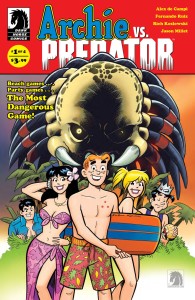 Archie Comics
Archie Comics Hey, everybody, it’s party time! Over at the news site Comics for Sinners, you can now read my latest review—my
Hey, everybody, it’s party time! Over at the news site Comics for Sinners, you can now read my latest review—my  Frank Thorne’s Red Sonja Art Edition, Vol. 3
Frank Thorne’s Red Sonja Art Edition, Vol. 3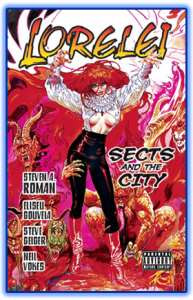 Lorelei: Sects and the City
Lorelei: Sects and the City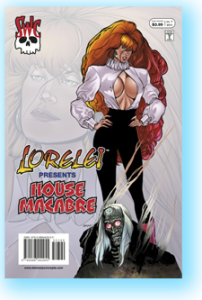 Lorelei Presents: House Macabre
Lorelei Presents: House Macabre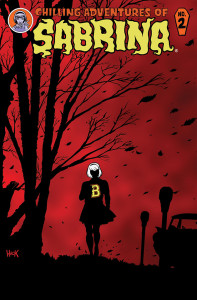 Over at the news site Comics for Sinners, you’ll find my review of
Over at the news site Comics for Sinners, you’ll find my review of 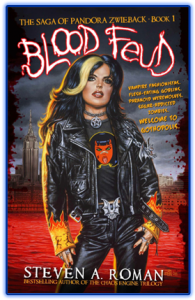 Speaking of teenagers involved in horror-related adventures, have you met Pandora Zwieback, star of my young adult novel series The Saga of Pandora Zwieback? Pan is a 16-year-old Goth girl who’s spent the last decade being treated for mental health problems because she can see monsters. It’s only after she meets a shape-shifting monster hunter named Sebastienne “Annie” Mazarin that Pan discovers she’s never been ill—her so-called “monstervision” is actually a supernatural gift that allows her to see into Gothopolis, the not-so-mythical shadow world that exists right alongside the human world.
Speaking of teenagers involved in horror-related adventures, have you met Pandora Zwieback, star of my young adult novel series The Saga of Pandora Zwieback? Pan is a 16-year-old Goth girl who’s spent the last decade being treated for mental health problems because she can see monsters. It’s only after she meets a shape-shifting monster hunter named Sebastienne “Annie” Mazarin that Pan discovers she’s never been ill—her so-called “monstervision” is actually a supernatural gift that allows her to see into Gothopolis, the not-so-mythical shadow world that exists right alongside the human world.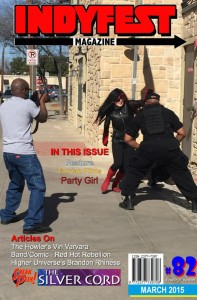 This just in: It’s been confirmed that StarWarp Concepts—publishing home of The Saga of Pandora Zwieback and a host of other great novels, graphic novels, and comic books—will be the cover feature of IndyFest Magazine #85, coming this June!
This just in: It’s been confirmed that StarWarp Concepts—publishing home of The Saga of Pandora Zwieback and a host of other great novels, graphic novels, and comic books—will be the cover feature of IndyFest Magazine #85, coming this June!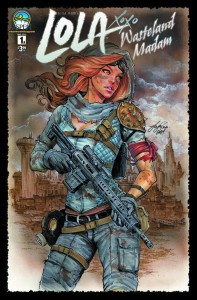 Over at the news site Comics for Sinners, you’ll find my review of
Over at the news site Comics for Sinners, you’ll find my review of 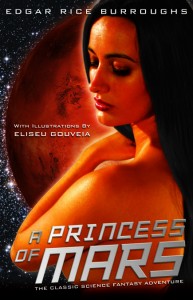 Dejah Thoris
Dejah Thoris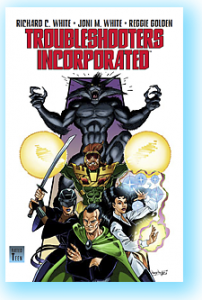 Gypsy and Shadowmist
Gypsy and Shadowmist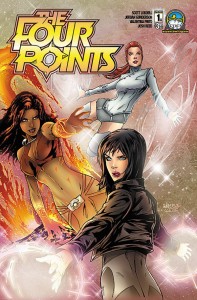 Over at the news site Comics for Sinners, you’ll find my review of
Over at the news site Comics for Sinners, you’ll find my review of 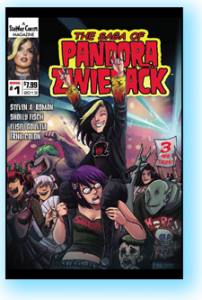 The Saga of Pandora Zwieback Annual #1
The Saga of Pandora Zwieback Annual #1